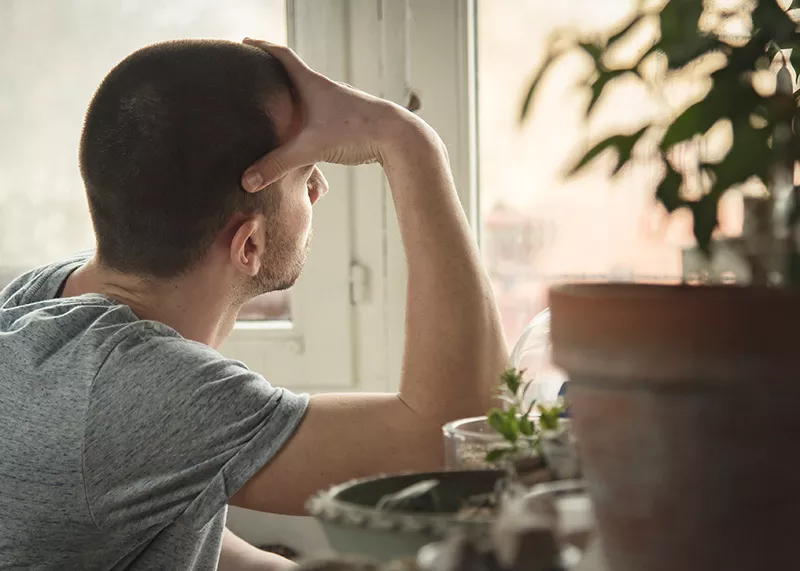Seasonal affective disorder (SAD)

What to do about the winter blues
During late fall and winter, the days get much shorter, grayer and definitely colder. It's almost enough to make you want to stay in bed forever. This may be a common thought for many of us, but for some, the winter months can bring on a serious depressive state.
What is seasonal affective disorder (SAD)?
Seasonal affective disorder (SAD) is a major depressive disorder with a seasonal component. People with SAD experience depressive symptoms in the fall and winter that usually remit in the spring or summer. Don St. John, a physician assistant with UI Behavioral Health, said the cause of SAD is unknown but some research has shown that it relates to melatonin, the natural hormone in the body that governs our sleep/wake cycles.
Who is likely to get SAD?
About 70 to 80 percent of SAD patients are women who usually develop the disorder in their 30s. Location also seems to play a part in the disorders. The further north a person lives, the more likely they are to develop SAD, since it is related to the amount of daylight. Individuals with a family history of depression, especially bipolar disorder, are also at a higher risk of developing SAD.
Symptoms of SAD
Symptoms of SAD are atypical of most major depressive disorders which are usually characterized by loss of appetite, difficulty sleeping, loss of motivation and a depressed mood.
SAD symptoms include
- Increased sleep
- Difficulty waking
- Increased appetite and carbohydrate cravings
- Weight gain
- General sluggishness
"Many people experience the winter blahs and cabin fever, have trouble getting out of bed, have less energy, and don't feel like doing a lot," St. John said. "But when it gets to the point where it is interfering with your daily function, your work, and other things, that's when it can be diagnosed as SAD."
How to treat SAD
Treating SAD with antidepressants
SAD can be treated with antidepressant drugs, especially those that increase levels of serotonin in the brain. Serotonin also seems to have a seasonal component; lower levels of the neurotransmitter occur during the winter months, St. John said.
Treating SAD with phototherapy
There is also good evidence that phototherapy works to treat SAD, but it has to be the right kind of light, St. John noted. The right kind of light is usually about 10,000 lux (lux is a measure of how bright light is), which is the maximum recommended amount of artificial light. Ten thousand lux is about the same level of brightness as a cloudy mid-day during an Alaskan winter, whereas a sunny day further south generates about 80,000 lux.
Some SAD patients use light boxes with lux of 2,500 to 10,000 for treatment. Patients usually begin with about 15 to 20 minutes of exposure every morning and may increase exposure time up to one hour. Some patients also progress to a second dose during late afternoon or early evening.
"But not too late or it will interfere with sleep patterns," St. John said.
Treating SAD with dawn simulators and light visors
In addition to light boxes, some people use dawn simulators to create an earlier sunrise that helps them get out of bed. Others use light visors, sunglasses-like visors with small lights inside.
How to prevent SAD
So how do you avoid SAD? "NoSADs," the Northern Seasonal Affective Disorder Support Group, suggests getting regular exercise (especially outside during daylight hours), sitting by a window when inside, and opening up the shades.
"NoSADs" also recommends a low-fat diet, a daily multi-vitamin, elimination of caffeine, stress reduction, and laughter (always the best medicine) to help combat the effects of SAD. This should not be considered medical advice, but suggestions that you should discuss with a physician.